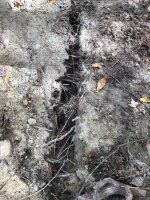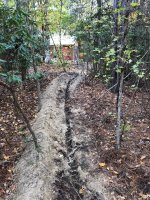s219
Super Member
- Joined
- Dec 7, 2011
- Messages
- 8,607
- Location
- Virginia USA
- Tractor
- Kubota L3200, Deere X380, Kubota RTV-X
I have done a lot of work with trenchers for irrigation lines, water lines, and electrical. Cutting the trench can have difficulties, but is generally pretty easy. However, don't underestimate the amount of time/effort it will take to fill the trenches back in, and then to deal with settling, soil compaction, etc. I am not exaggerating when I say that I probably spend 4X the trenching time putting things back to normal. Some jobs are less complicated than others in this regard. Some require a lot of manual hand labor. SO have a good plan to fill the trenches back in!



